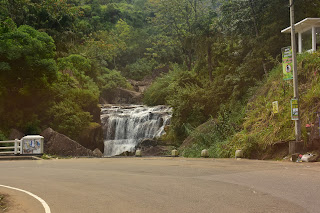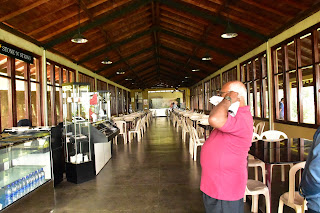| |||

This blog is allocated for news and reecollections about the 1960 Colombo Medical Faculty Entrants. If you are in the batch please send your articles re the batch to the following email address ;- 1960batch@gmail.com. Please click on 'OLDER POSTS' at the end of each web-page. Please type your search queries in the box provided and press 'search'.
My Web-links
Please click on each of the web-links listed on the right hand side below, to explore your horizons.
Sunday, December 27, 2020
Saturday, December 26, 2020
Tuesday, December 22, 2020
Friday, December 18, 2020
Celebration of Christmas in a hospital.
Christmas is a time for giving and sharing.
Celebration in a ward during Christmas.
https://www.facebook.com/100000068888947/videos/3903316883013903/
Thursday, December 17, 2020
The spirit of Christmas.
Please click on the web-link below with your speakers on :-
https://www.facebook.com/100000068888947/videos/3903316883013903/
Sunday, December 13, 2020
A review of 'RememberedVignettes', by Prof.Walter Perera, Prof English, Peradeniya
Prof.Walter Perera, Prof English, Peradeniya.
Although I had agreed to review “Remembered Vignettes: The life of a Medical Student in Ceylon, of the Early 1960s,” I had misgivings when I actually received the publication. After all, I was being asked to respond to reminiscences by those who were “freshers” at Medical College the year that I was admitted to the lower-kindergarten; it included a plethora of medical terms that were beyond my understanding; and as an academic who had specialized in postcolonial literature I felt uncomfortable at reviewing a book that included so many politically incorrect jokes and confined itself to the crème de la crème of society (those whom Jean-Paul Sartre called “the whitewashed elite” in his preface to Frantz Fanon’s The Wretched of the Earth) and gave scant attention to the masses.
On completing the manuscript, however, I felt privileged to have been invited to perform such a challenging task. This book of reminiscences captures for posterity an epoch that may never be restored. It portrays a Sri Lanka poor in material possessions but rich in community, where students enjoyed life to the lees but not at the expense of others, where student politics did not constantly interfere with the university calendar or its administration, where talented undergraduates studied under the best of teachers in Sri Lanka and then obtained outstanding postgraduate qualifications overseas but seldom thought of abandoning their country, and where students would actually undertake bicycle trips from Colombo to Jaffna. I hope that this book is eventually translated into Sinhala and Tamil so that current students will be better acquainted with the rich traditions handed down to them. Indeed, it may even prevent the recurrence of the kind of incident that took place in Peradeniya recently when student leaders insisted that a new hall of residence be named after one of their martyred leaders and not after Sir Ivor Jennings, the first vice chancellor of the University of Ceylon—forgetting that none of them, including their martyred forbear, would have attended the University of Peradeniya had Jennings not worked so hard to establish it in this site.
Compiled and narrated by Philp G. Veerasingham and edited by Tissa Kappagoda, this is a collective effort. Views of other contributors are either reported or fused into the narrative which makes the book almost postmodern in conception since it also includes an amalgam of anecdotes; lists of songs, text books, cartoons, prescriptions and films; in addition to pen portraits and straightforward narrative. A prefaratory chapter that deals generally with student life is followed by several which read like a paean of praise for professors, administrators and students at the Medical Faculty. However, while focussing on their professional skills, the compilers also include the quirks, oddities and other characteristics of those like A.C.W. Koch, Clifford Misso, P.R. Anthois, and Milroy Paul, to mention just four, a strategy which humanises people who are but distant (albeit famous) names to those not in the field. Furthermore, many of the individuals mentioned in the book subsequently obtained positions in Kandy or Peradeniya. It was amusing to discover, that the late Rama Karthigesu who lived in a flat above our house, was as boisterous when he was a student in medical college!
If one were to select an area in which the era being celebrated diverges from the present, it would be the respect bestowed on teachers. These accounts make it plain that staff frailties and eccentricities were accepted as givens and whatever punishments imposed on students, whether being forced to sit on stage for the duration of a lecture, or having cigarettes, cards and money confiscated when found gambling in the common room, were accepted with grace. Rules were broken but in the understanding that punishment would follow if the authorities identified the culprits. It is a far cry from current conditions where lecturers are sometimes threatened and even assaulted, vice chancellors virtually taken hostage, and stern punishments meted out for dire offences which are then reduced in response to student strikes or interventions by VIPs.
That the late 50s and early 60s produced a generation of top doctors who held their own with peers in the rest of the world is a given; in fact, this book would have served a higher purpose had its compilers provided, say, a more comprehensive list of those who had passed out in this period with their qualifications and positions held. In addition to motivating the current generation to emulate their sires, it would also remind the powers-that-be in England the extents to which students from the Commonwealth have contributed to the medical profession in England. Given recent moves by the British government to reduce opportunities for students overseas to obtain higher medical degrees in the UK, such a “nudge” is indeed timely.
To reach such heights, these “medicos” would have indubitably studied hard but this book does not give the impression that life was an unremitting “cram” session; on the contrary, they indulged in the standard vices of that generation—smoking, drinking, and small-time gambling, while finding the time to appreciate music, dancing and the Arts. I was particularly struck by the account of an SCM trip to Peradeniya and the manner in which the four part harmony rendered by the participants enriched the train journey of other commuters and perhaps later those who attended service at what is now called the “Gal Palliya” Alas, mine was perhaps the last generation that undertook such excursions. The SCM has since been decimated on account of a tussle for power between overzealous liberation theologians on the one hand, and new-fangled NGO based Christian groups on the other. It is particularly distressful that this organization was destabilized and practically destroyed by the very people who had benefited from it when they were students.
What remains uppermost in one’s mind after putting down this book is that, despite being compiled by a Tamil who would have obviously been affected in some way by the 1983 riots and the ethnic conflict that followed, there is absolutely no rancour to be found therein. Sinhalese, Tamils, Muslims and members of other communities who appear are occasionally laughed at for perceived ethnic peculiarities but all in good humour. Also, the tendency to laugh at others is tempered by that important ability to laugh at oneself. The strife that has rent the country asunder appears to have further strengthened the resolve of the batch of 1960 to maintain the bonds that were established in lecture rooms, operating theatres, halls of residence and at social events. A current first year medical student, born after the pogrom of 1983 in a Sri Lanka in which assassinations, bombings, security check points and constant civil war are the rule rather than the exception, could be excused for thinking that “Resurrection” is a work of fiction. But this reader who was transported into another world, almost another life, in thumbing through these pages can but echo these lines from Yeats’s “Broken Dreams” in concluding this review:
From dream to dream and rhyme to rhyme I have
ranged
In rambling talk with an image of air:
Vague memories, nothing but memories.
Friday, December 11, 2020
Obituary, Prof. Eugene Wickremanayake
It is with great sorrow we inform the demise of Professor Eugene Wickramanayake, Emeritus Professor of Anatomy, University of Peradeniya (dearly beloved wife of late Professor Tommy Wickramanayake) and a distinguished alumnus of the Colombo Medical School.
Obituary Notice.jpg
May her soul rest in peace.
This is further to the Obituary Notice sent earlier today. Prof Wickramanayake's remains will lie at AF Raymond tomorrow (12th December) from 8 am, for cremation at the new crematorium tomorrow at 11.30 am. (According to her son, Lalith.)
Friday, December 4, 2020
Subscribe to:
Posts (Atom)










